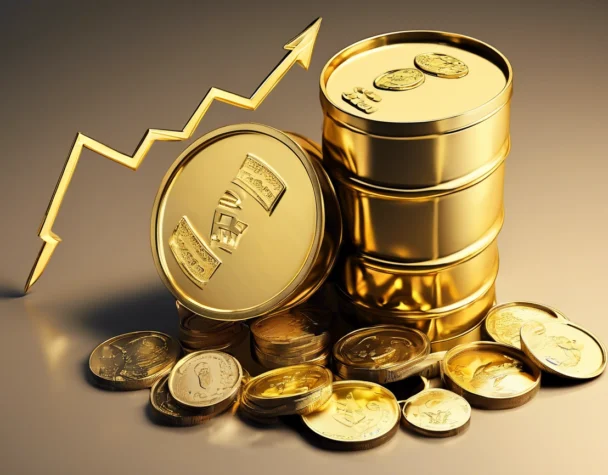
Commodity Markets Rattle as Oil Slumps and Gold Surges Amid Tariff Fallout
Mon, April 28, 2025Commodity markets are experiencing sharp volatility as escalating U.S. trade policies, shifting supply dynamics, and safe-haven investor flows reshape the landscape. As of April 29, 2025, major commodities such as oil, gold, and agricultural products are reacting differently to heightened geopolitical risks and market uncertainty.
Crude Oil Declines as Trade Tensions and Supply Glut Weigh Heavily
Oil markets are feeling significant pressure. Brent crude has dropped to around $66.79 per barrel in April, down sharply from $74.98 earlier this year. Barclays has cut its 2025 Brent crude forecast by $4 to $70 a barrel, citing a potential global supply surplus and weakening demand triggered by protectionist trade policies (source).
Further complicating the oil market, Greek shipping companies have resumed transporting Russia’s Urals crude oil after prices slipped below the G7-imposed $60-per-barrel cap. This move allows shipments to stay within Western sanctions but also increases global oil availability, placing further downward pressure on prices (source).
Meanwhile, the natural gas market has shown some resilience, posting a 10% price increase recently. However, sentiment remains fragile amid fluctuating storage levels and ongoing geopolitical developments impacting supply chains.
Gold Shines as Investors Seek Refuge from Market Uncertainty
While oil struggles, precious metals are soaring. Gold prices have surged to an all-time high of $3,500 per troy ounce, skyrocketing from $2,623 at the start of the year. The combination of falling equity prices, a weakening U.S. dollar, and rising recession fears has sparked a wave of investment into safe-haven assets.
European gold exchange-traded commodities (ETCs) attracted nearly €1 billion in new inflows during the week ending April 18, marking the largest weekly intake since January 2025 (source).
This trend underscores growing investor anxiety about inflation, equity market volatility, and the potential for a protracted economic downturn if tariff escalations continue. Analysts expect gold demand to remain elevated as markets digest ongoing policy uncertainty and mixed economic data.
Agricultural commodities have responded more unevenly to the shifting landscape. Some crops, like soybeans, have seen price gains due to tightening supply chains. However, broader concerns persist about the stability of U.S. trade relations with key buyers such as China. The USDA’s April World Agricultural Supply and Demand Estimates (WASDE) report offered a neutral tone, providing temporary stabilization in grain markets (source).
As commodities navigate this complex environment, investors and businesses alike must prepare for continued volatility driven by policy shifts, supply disruptions, and changing global demand patterns.

